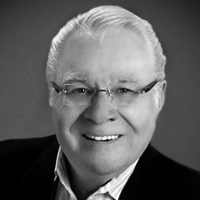Question
If a manufacturer shows a match to NAL on the fitting screen, can I be fairly confident that there will be match to prescriptive targets in the real ear?
Answer
That’s an easy one to answer - no. Way back in 2003 Hawkins and Cook showed that when targets matched on the fitting screen, they may be 10 dB or more away from fitting targets in the real ear in the high frequencies.
More recently, Aazh, Moore, and Prasher (2012) conducted probe-microphone testing to determine if using the labeled prescriptive target (NAL-NL1) within the manufacturers’ software achieved these targets in real-ear verification. Testing was conducted on 51 ears, all with open-fit hearing aids, using NAL-NL1 presets in the fitting software. Following the initial measures, adjustments were made to improve the fitting. Seventy-one percent of the fittings had greater than a 10 dB mismatch from target when the hearing aids were tested in the ear. After making some manual adjustments, 82% met target, with the majority being met through at least 2000 Hz. Eighteen percent still did not meet target, but I suspect that was due to precipitous losses where targets often cannot be met at 4000 Hz or beyond because of feedback issues or gain limitations of the instrument.
If your goal is to fit to a prescriptive target, it is risky to use the manufacturers’ fitting algorithm without doing real-ear verification. Last year, I showed the findings from three leading manufacturers, and there was considerable “underfitting,” especially for soft inputs (see Mueller, 2014). That concern was taken up more formally in a study by Sanders, Stoody, Weber and Mueller (2015). In this research, we compared the premier hearing aid and current software of five leading manufacturers and conducted real ear testing on 16 ears. Again, as previously found, real ear values were significantly below desired targets in the high frequencies. Of course, this is only an issue for people who do not follow best practices, and do not conduct probe-mic verification.
This Ask the Expert was taken from the Siemens Expert Series text course, Day-to-Day Hearing Aid Fittings: Clinical Nuggets from Recent Research. Another good resource on this topic is the recent 20Q with Gus Mueller article, Today's Use of Validated Prescriptive Methods for Fitting Hearing Aids - What Would Denis Say?
References
Aazh, H., Moore, B., & Prasher, D. (2012). The accuracy of matching target insertion gains with open-fit hearing aids. American Journal of Audiology, 21(2),175-180. doi: 10.1044/1059-0889(2012/11-0008).
Hawkins, D.B., & Cook, J.A. (2003). Hearing aid software predictive gain values: How accurate are they? Hearing Journal, 56(7), 26,28,32,34.
Sanders, J., Stoody, T., Weber, J., & Mueller, H. G. (2015). Manufacturers’ NAL-NL2 fittings fail real-ear verification. Hearing Review, 21(3), 24.

